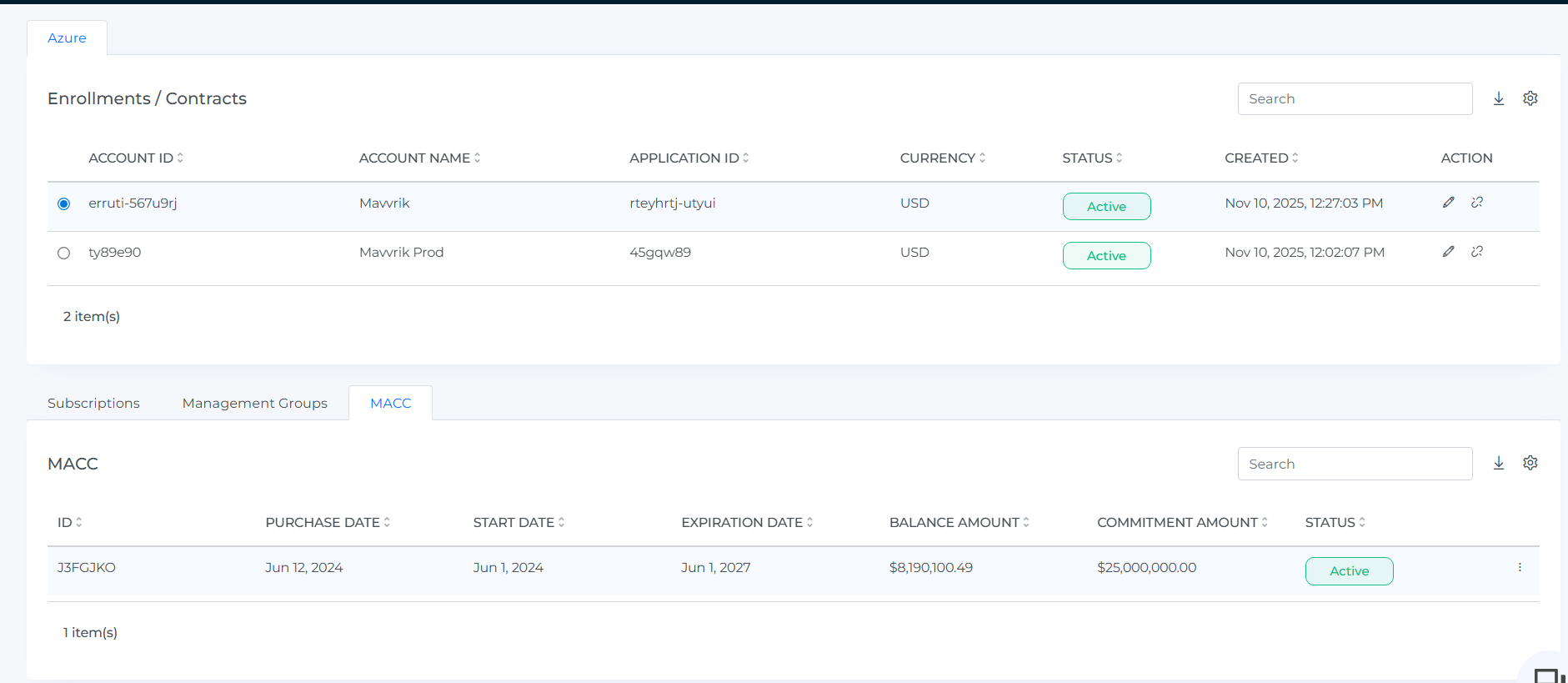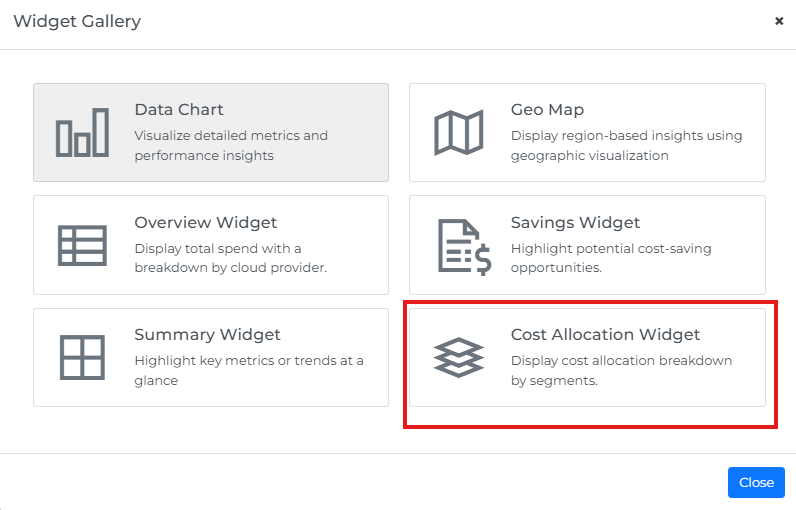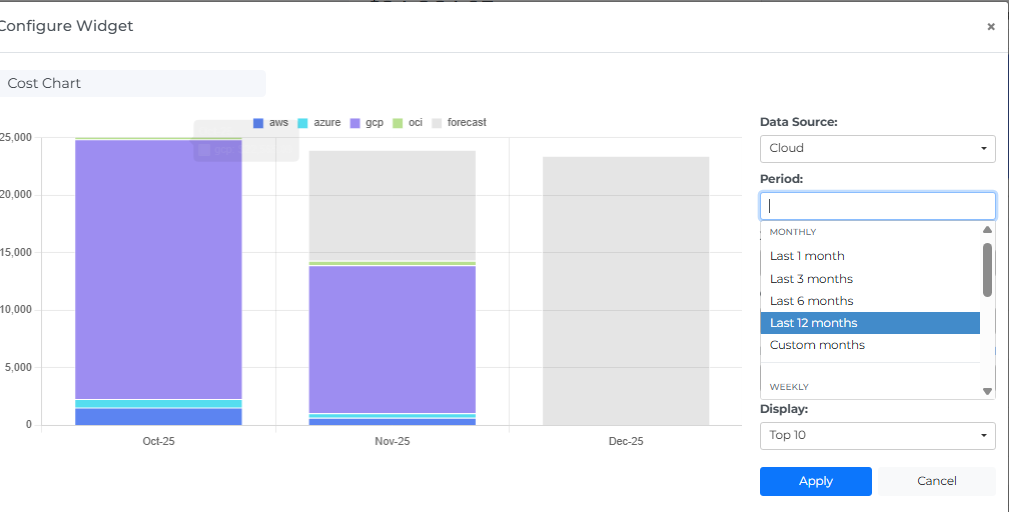November 2025
We’re excited to announce our November 2025 release! This one’s packed with partner power-ups, sharper AI cost insight, and cleaner, truer cost signals across cloud and K8s. Highlights include Partner Dashboard upgrades (global/per-customer Price Book, customer billing address, and AWS onboarding via partner admin), precise Running-only costing for on-prem Kubernetes, Azure MACC balance/usage visibility, and AI cost attribution behind Azure APIM so you can see who used what even behind a gateway. Plus, Custom Dashboard upgrades (clone, Cost Allocation widget, new time ranges, descriptions) and platform improvements that tighten allocations, exports, and governance signals.
For more details, please reach out to your Mavvrik representative or check our updated documentation Help Center
Release Version | Features |
|---|---|
Release-2025.11.19 |
|
Partner Dashboard : Pricing, Billing Address & AWS Onboarding
Partners can now use Price Book to manage custom billing rates at two levels: Global (apply a rule book across all customers) and Per-customer (tailor rules for individual customers/child tenants). Upload a rule book and apply discounts, markups, or fixed rates by service, billing entity, or location. You can also add a customer billing address so invoices and statements carry the right details per tenant. Bonus: partners can onboard AWS customers using their partner admin login-no customer login or tenant switch required-so setup is faster and fully partner-led.
Typical questions answered:
“Can I set a global price book for all my customers?”
“Can I override global rules for a specific customer or location?”
“Can I store the correct billing address for each customer/tenant?”
“Can we onboard AWS customers without asking them to log in?”
For details refer : Partner Dashboard Price Rule

Microsoft Azure Consumption Commitment (MACC) Visibility
Track your Microsoft Azure Consumption Commitments (MACC) right in Mavvrik. See available commitments with current balance/usage so finance and ops know exactly where they stand.
Scope call-outs: supported for direct agreements only (not reseller/partner purchases) and for EA/MCA billing contracts.
Typical questions answered:
“What’s our remaining MACC balance and how fast are we burning it?”
“Is this tenant covered by MACC or pay-as-you-go?”
“Do we support MACC from resellers?” (Answer: no-direct EA/MCA only.)
For details refer : Azure MACC Visiblity

Track Azure LLM Cost with Azure API Manager (APIM)
When AI traffic is routed through an Azure API manager/gateway, cost signals get blurred. We now support AI cost visibility behind API gateways (e.g., APIM) so you can align token usage and spend back to the right customer, product, or app-even with that extra layer in the path. No more stitching together Log Analytics + Power BI just to answer “who used what.”
Typical questions answered:
“Can we attribute AI costs to customers even when all traffic goes through APIM?”
“Which apps/tenants are driving token spikes behind the gateway?”
“Can Finance see AI spend by customer without custom Power BI workarounds?”
Custom Dashboard Enhancements
Clone widgets - One-click copy, quick tweaks, save. No rebuilds, no drama.

Cost Allocation widget - Drop allocation visibility right into your boards for clean showback/chargeback.

Time ranges - Fresh presets: last 3/6/12 months, 14/30/60 days, plus expanded weekly options. Your cadence, your view.

Descriptions - Add blurbs to dashboards and widgets so everyone knows what they’re looking at-context on tap.
Platform Improvements:
Kubernetes (On-Prem) : Running Pods Only
Costs now attribute only to Running pods (viakube_pod_status_phase). Pending/Failed/Succeeded/Terminated are excluded, giving cleaner CPU/Memory/GPU/Volume costing with no charges for non-operational workloads.Cost Allocation : Negative Manual Entries
You can enter negative manual entries in Cost Allocation segments to distribute discounts/credits as negative shared cost. This keeps totals aligned with what you actually paid, not just vendor-side “spend.”Resource Dashboard : Creation & Termination Time (CSV)
The resource dashboard CSV now includes resource creation time and termination time. This makes lifecycle reviews, audits, and RCA timelines much easier.Inactivity Alerts : Kubernetes, Datacenter & Cloud Providers
We alert the owner/admin of the mavvrik application when a Kubernetes cluster, Datacenter or a cloud account goes inactive. Faster signal means quicker cleanup, fewer surprises, and tighter governance across both K8s and cloud environments.Daily Alert Frequency: Inactivity alerts are sent every day until the issue is resolved, ensuring timely action and improved visibility.
Account-Level Control: If you do not want alerts for a specific account, simply navigate to account admin page, edit the account settings and change its status to Disabled. This gives you full control over which accounts are monitored.
.png)